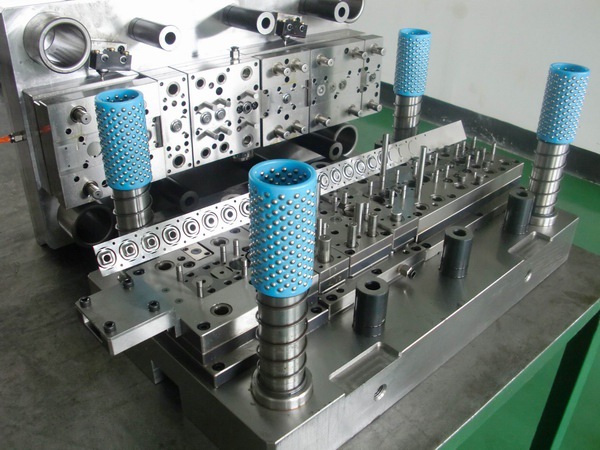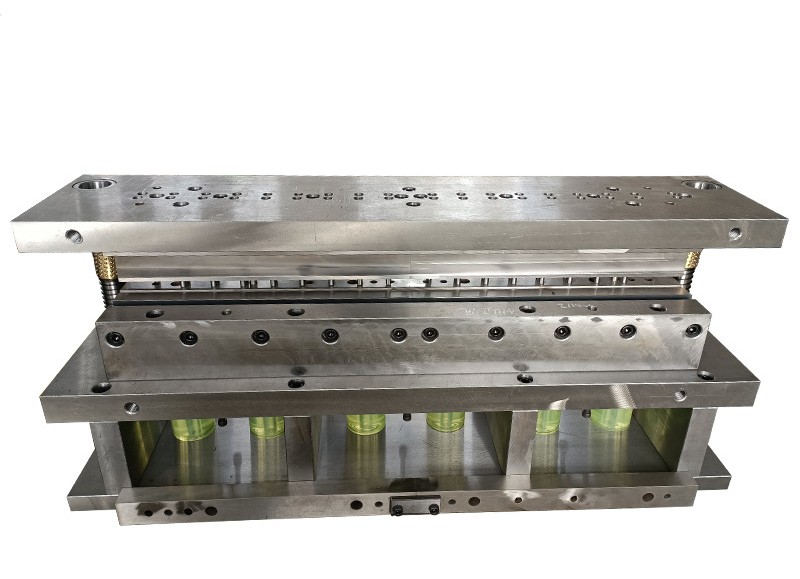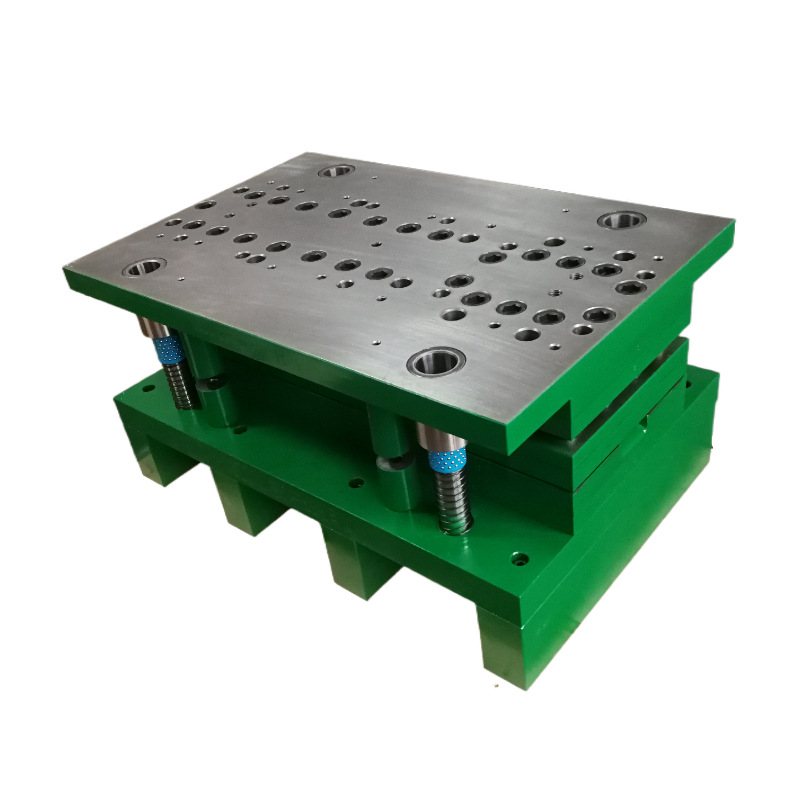Yixing Technology excels in providing custom stamping mold services, our expertise spans four key types of molds: single punch die, compound die, progressive die, and transfer die, each designed to optimize production efficiency based on part complexity, size, and volume. As one of China's leading stamping mold suppliers, we deliver tailored solutions with advanced technology and stringent quality control, ensuring that each mold is crafted to meet your specific requirements from design to production.


Expert Custom Mold Design: With the expert Engineering Department and updated machinery, Yixing Technology can custom design the mould to meet specific requests. CNC, EDM, wire cutting, deep hole drilling, milling machines, drilling machines, grinding machines etc are all equipped for mold production. All details will be stated in the DFM report and will be discussed and confirmed with customers before production.

Strict Material Selection: As one of leading stamping mold suppliers, Our selection of mold materials is very strict. We not only consider the hardness, strength, and wear resistance of the materials, but also the appropriate toughness, as well as high hardenability, non deformation during heat treatment, and less prone to cracking during quenching. On the other hand, if a small change in the design can increase mold life, we will also have open discussion with customers.

High-Quality Standards and Industry Recognition: Shanghai Yixing Technology provides professional sheet metal fabrication services. We always demand ourselves with high standards. We control production, inspection, and shipment using standards that comply with the ISO9001 quality system. Shanghai Yixing Technology manufactures metal stamped parts and molds for all industries especially for the automotive, electrical, industrial, consumer products, electronics, and medical industries. Our quality has been recognized by the Fortune top 500 customers.
As a trusted stamping mold supplier, we utilize a wide range of materials, each carefully chosen to meet the specific requirements of your production process. Yixing Technology's material expertise guarantees that your molds are crafted with the highest standards to support your production needs, whether for high-volume or intricate stamping processes.
| Category | Grade | Description |
| Carbon tool steel | T8A, T10A etc | Thye have the advantages of good processing performance and low cost. But the hardenability and red hardness are poor, the heat treatment deformation is large, and the bearing capacity is low. |
| High-speed steel | CrWMn, 9Mn2V, 7CrSiMnMoV, 6CrNiSiMnMoV, etc | Low alloy tool steel is made by adding an appropriate amount of alloying elements on the basis of carbon tool steel. Compared with carbon tool steel, it reduces quenching deformation and cracking tendency, improves the hardenability of the steel, and also has better wear resistance. |
| High carbon and high chromium tool steel | Cr12, Cr12MoV, and Cr12Mo1V1 etc, D1, DC53, SKD11 | They have good hardenability, hardenability, and wear resistance. They have minimal heat treatment deformation and are high wear-resistant micro deformation mold steels, with a load-bearing capacity second only to high-speed steel. However, severe segregation of carbides requires repeated upsetting and drawing (axial and radial) to reduce the unevenness of carbides and improve their performance. |
| High carbon medium chromium tool steel | Cr4W2MoV, Cr6WV, Cr5MoV etc | They have low chromium content, fewer eutectic carbides, uniform distribution of carbides, small heat treatment deformation, good hardenability and dimensional stability. Compared with high carbon and high chromium steel with relatively severe carbide segregation, the performance has been improved. |
| High-speed steel | W18Cr4V, W6Mo5Cr4V2, 6W6Mo5Cr4V etc | High speed steel has the highest hardness, wear resistance, and compressive strength among mold steels, and has a high load-bearing capacity. Commonly used in molds are W18Cr4V (code 8-4-1) and W6Mo5Cr4V2 (code 6-5-4-2, US grade M2) with low tungsten content, as well as the low-carbon and vanadium reducing high-speed steel 6W6Mo5Cr4V (code 6W6 or low-carbon M2) developed to improve toughness. High speed steel also needs to be forged to improve its carbide distribution |
| Matrix steel | 6Cr4W3Mo2VNb, 7Cr7Mo2V2Si, 5Cr4Mo3SiMnVAL etc | Add a small amount of other elements to the basic composition of high-speed steel, and appropriately increase or decrease the carbon content to improve the performance of the steel. This type of steel is collectively referred to as matrix steel. They not only have the characteristics of high-speed steel, but also have certain wear resistance and hardness, and their fatigue strength and toughness are better than those of high-speed steel. They are high-strength and toughness cold work mold steel, but their material cost is lower than that of high-speed steel. |
| Hard alloy and steel bonded hard alloy | / | Hard alloy has higher hardness and wear resistance than any other type of mold steel, but poor bending strength and toughness. The hard alloy used for molds is tungsten cobalt type. For molds with low impact resistance and high wear resistance requirements, hard alloys with lower cobalt content can be selected. For molds with high impact, hard alloys with higher cobalt content can be selected. |



The stamping molds can be classified into below five categories based on process properties:
1. Punch and Blanking Die
A die that separates materials along a closed or open contour line. Such as shearing dies, blanking dies, punching dies, trimming dies, edge cutting dies etc.
2. Bending Die
A mold that causes a blank to undergo bending deformation along a straight line (bending curve), thereby obtaining a workpiece with a certain angle and shape.
3. Deep Drawing Die
A mold used to make open hollow parts from blank sheet materials, or to further change the shape and size of the hollow parts.
4. Forming Die
It is a mold that directly replicates the shape of a blank or semi-finished workpiece into a convex or concave mold according to the drawing, while the material itself only creates local plastic deformation. Such as bulging die, necking die, expanding die, undulating forming die, flanging die, shaping die, etc
5. Compression Mold
Use strong pressure to cause the original metal to flow and deform into the desired shape. Its types include extrusion molds, embossing molds, and final pressure molds.
1. Improving the design of stamping molds
The rationality of stamping die design is the basis for improving the durability of stamping dies.
2. Correct selection of stamping die materials
Different stamping die materials have different strengths, toughness, and wear resistance. Using advanced materials under certain conditions can increase durability several times. Therefore, in order to improve the durability of stamping molds, it is necessary to choose good materials.
3. Reasonably carry out forging and heat treatment of stamping die parts
One of the main ways to improve the durability of stamping dies is to choose high-quality stamping die materials while requiring reasonable forging and heat treatment for materials of the same material and different properties.
4. Reasonably arrange the manufacturing process of stamping molds and ensure machining accuracy
The machining accuracy of stamping molds has a significant impact on their durability. If the assembly clearance is uneven in the punching die, it often causes the concave die to gnaw and affect the service life of the stamping die under the action of shear force. At the same time, if the surface smoothness of the stamping die is too low, it will also reduce the durability of the stamping die.
5. Correct selection of press machine
In order to improve the durability of stamping molds, it is necessary to select a press with high precision and rigidity, and make its stamping tonnage greater than 30% of the punching pressure.
6. Reasonable use and maintenance of stamping molds
In order to improve the durability of stamping molds, operators must use and maintain stamping molds reasonably, and regularly repair stamping molds to prevent them from working with defects.
1. Different production methods
The production method of stamped parts is to place the metal sheet in the stamping machine, and through the pressure of the stamping machine and the action of the mold, bend, cut, and form the metal sheet. Casting, on the other hand, involves heating a metal or alloy in liquid form, pouring it into a mold, and then removing it after cooling and solidification to obtain the desired product.
2. Different process complexities
Compared to cast parts, the process complexity of stamped parts is relatively low. Castings require the flow and solidification process of liquid metal, taking into account factors such as heat conduction and solidification shrinkage of the metal. Multiple treatments are required during the manufacturing process. Stamped parts, on the other hand, complete the required forming process in one go through the pressure of the stamping machine and the action of the mold.
3. Different product accuracy
The accuracy of stamped parts is relatively high, reaching millimeter level accuracy. The accuracy of castings is relatively low, usually only reaching centimeter level accuracy. This is because during the production process of stamped parts, the precision of mold production and the control precision of the stamping machine are higher than those of cast parts.
4. Different application ranges
Stamped parts are suitable for making various metal products with simple shapes, small sizes, and high precision, such as mobile phone casings, electronic product casings, automotive components, etc. Castings are suitable for producing metal products with complex shapes, large dimensions, and low precision requirements, such as automotive engines, ship components, etc.
5. Different production efficiency
The production efficiency of stamped parts is high, and large-scale production can be achieved through automated equipment, resulting in high production efficiency. The production efficiency of castings is relatively low, requiring multiple treatments and manual operations, resulting in low production efficiency.
In summary, there are significant differences between stamped and cast parts in terms of production methods, process complexity, product accuracy, applicability, and production efficiency. In actual production, it is necessary to choose the appropriate production method based on the requirements and production situation of the product.